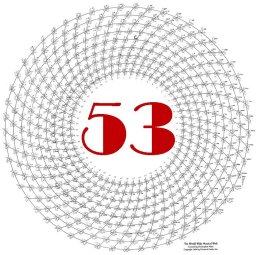*Simple*
The grace of the Holy Spirit settles where there are spiritual melodies, sanctifying both mouth and soul. —St. John Chrysostom
Chinese musical traditions dominated the other neighboring countries. In a very different way, the theoretical traditions of ancient Greece also dominated the musical thinking of the Romans and the early Christian churches.
Apollo, God of the Sun, of Medicine and of Music, represented pure intellect, mental and moral purity. He was the embodiment of the Greek ideal of harmony of body and soul, which to an ancient Greek was literally the purpose of life. The rhythm of Apollo’s heavenly travels (in his manifestation as the sun) produced healing harmony to purge us of guilt and illness. Temples to Apollo used music to induce ecstatic states to bring body and soul back into harmony. Homer recommended music “to avoid negative passions such as anger, sorrow, worry, fear, fatigue, and to promote healthful recreation for the elevation of body and soul.” Plato went a step further and said music was essential for the preservation of government: “by changing a musical mode, the very foundations of the state might be undermined… When the soul loses its harmony, melody and harmony assist in restoring it to order and concord.” As mentioned in Chapter Two, Pythagoras decided to standardize the music of his compatriots. In his time he was known as a holistic philosopher, astronomer and music theorist. He subscribed to the theory that there is a universal law of harmony, determinable through mathematics, which governs the celestial bodies, music, and our bodies. Numbers have a numinous and potentially healing and moral quality. Health was achievable through harmony with this universe of sound and stars, nature and the divine. As I said in Chapter Two, Pythagoras eliminated the five-limit modes and standardized a series of hard-to-sing 3-limit modes.
You can hear a direct comparison of the Just Modes (5-limit) vs. the Pythagorean modes (3-limit, pure perfect fifths only) here and in Chapter Two. Here again are the main Pythagorean modes starting from C (also just in the sound examples):
Figure 7-1
Lydian (F#) C – G –D –A –E –B –F# (C – D – E – F# — G – A – B – C)
Ionian (Major) F – C –G – D –A –E – B (C – D – E – F – G – A – B – C)
Mixolydian Bb – F – C – G – D –A – E (C – D – E – F – G – A –Bb — C
Dorian Eb – Eb — Bb – F – C – G –D – A (C – D – Eb – F – G – A – Bb – C)
Aeolian (Natural Minor) Ab – Eb – Bb – F – C – G – D (C – D – Eb – F – G – Ab – Bb – C)
Phyrgian Db – Ab – Eb – Bb – F – C –G (C – Db – Eb – F – G – Ab – Bb – C)
Notice that all six of these modes have C and G, the root and its perfect fifth. Note, too, that all of these modes have either whole steps or half steps (no 1½ step jumps). Pythagoras did not like those jumps, even though the Greek Tetrachord system of mode-making allowed for that possibility (see below). In the 1700s, European music theorists who wanted to “complete” the Greek system by having one mode for each of the seven scale steps added the “Locrian” mode, which would look like this in C:
Figure 7-2 Locrian Mode (you can play this on your piano)
Gb – Db – Ab – Eb – Bb – F – C (C – Db – Eb – F – Gb – Ab – Bb – C)
But this addition to the Pythagorean system came two millennia later! It has musical uses and was employed by Franck, Debussy and others, but the C to the Gb is actually a diminished fifth, not a perfect fifth. This makes it hard to give the “Locrian” mode any tonal anchoring. It tends to want to drift into the Phyrgian mode instead, which is probably why Pythagoras never created it in the first place.
If you would like to learn more about this chapter, “Ancient Greece,” you can buy the entire book, The Grand Unified Theory of Music, in pdf form for $25 with hundreds of embedded musical examples of scales and chords from all over the world.
A free introduction to what The Grand Unified Theory of Music offers is on this website and includes both text and a few musical examples from each webpage. If you would like to learn more about this chapter and the full contents of this entire e-book, you can buy The Grand Unified Theory of Music for $25, with hundreds of embedded musical examples of scales and chords from all over the world — and ideas for how to set up your computer system —
HERE.
You’ll get a personalized password you can use to see the entire e-book. Inside the full book, you will also get a link to the complete pdf file of this e-book, which you can read on your Kindle or similar device. The links to the hundreds of mp3 sound files – the same ones you can hear on the website — will also be included. This is “Version 1.0” of The Grand Unified Theory of Music. Because it is an e-book, additions, corrections and improvements in the sound may be added at any time. The Grand Unified Theory of Music is Copyright © 2018 by Christopher Mohr. All rights reserved.
One person per password. Sharing this password with others is a violation of copyright. Do not allow others to use your password or link to the pdf file!
